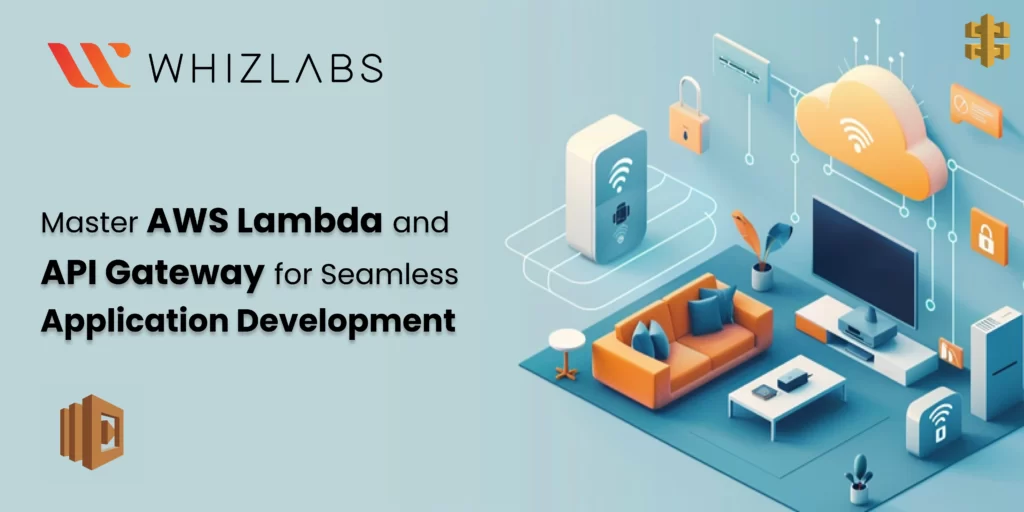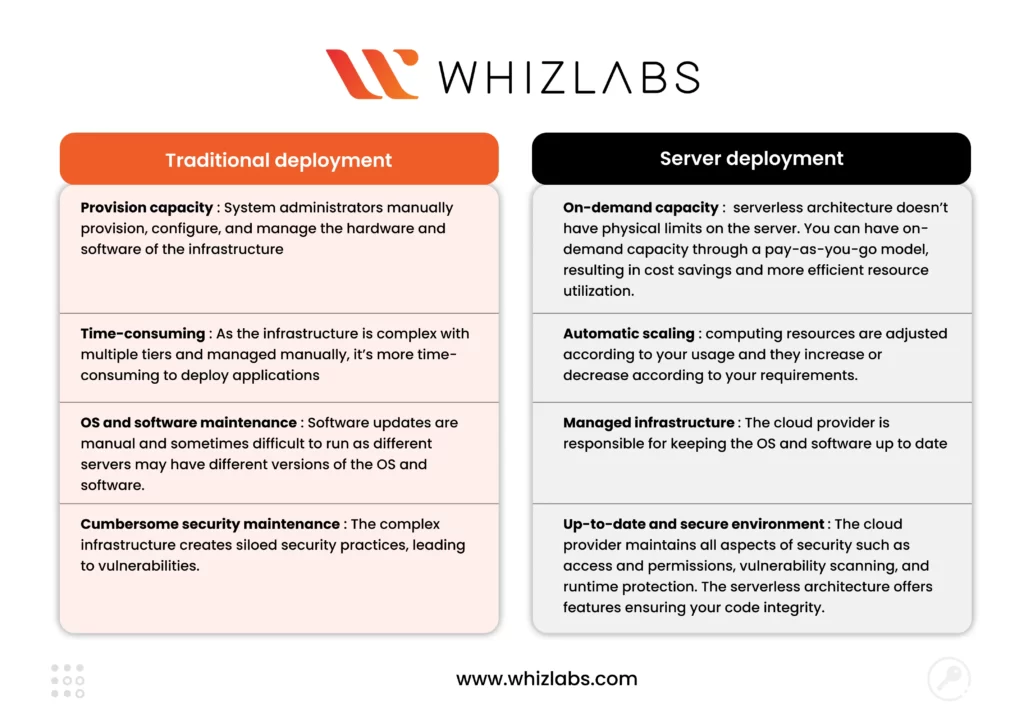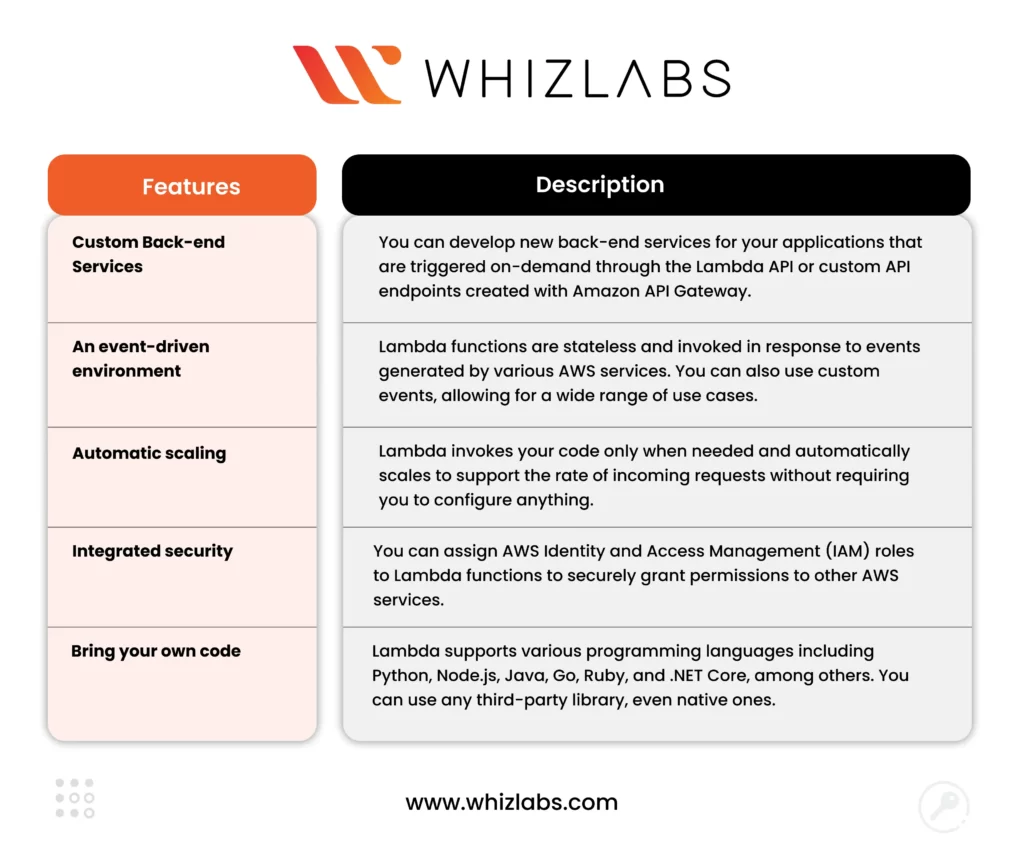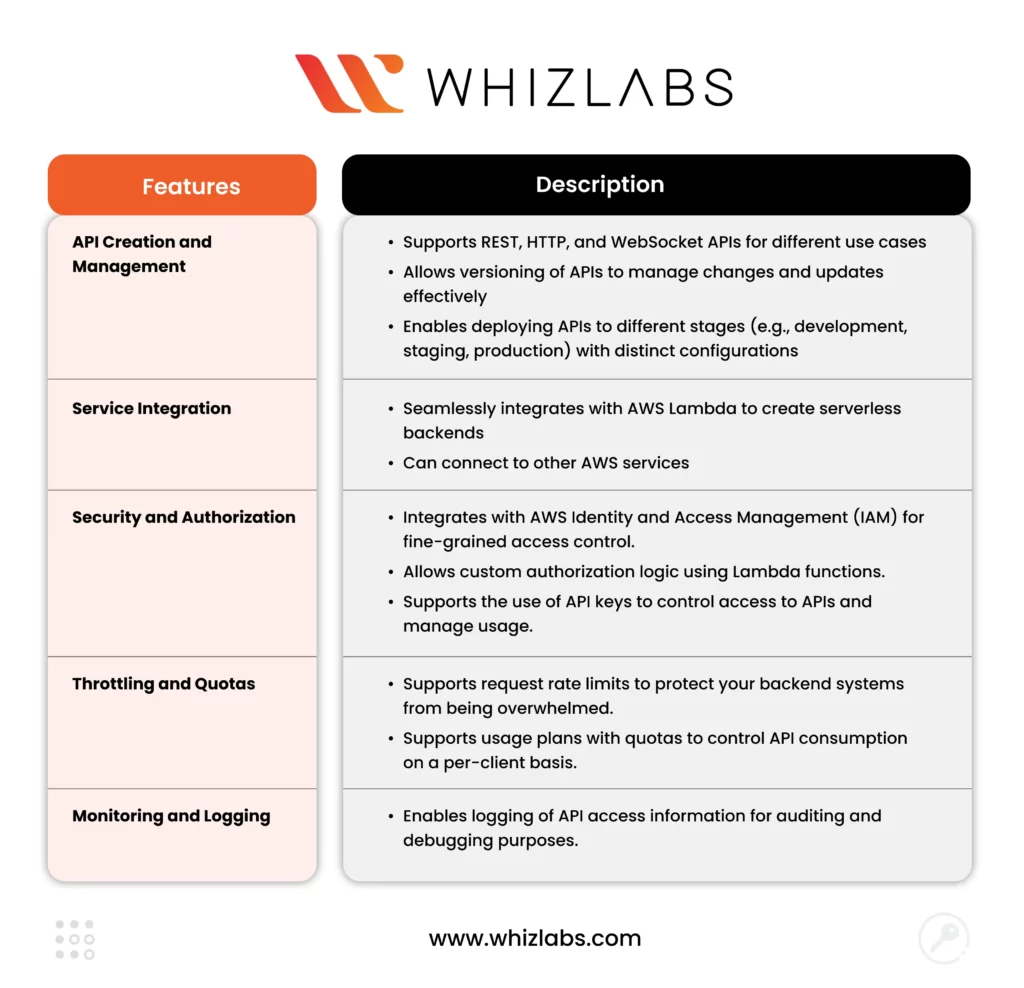A serverless architecture is a cloud-based infrastructure that allows you to deploy applications without having to provision, manage, or scale the servers. By adopting serverless computing for application development, you will be at the forefront of innovation with improved flexibility, scalability, and cost efficiency.
This blog describes how you can use AWS services to deploy serverless applications. Earning the AWS Certified Developer Associate certification can further enhance your understanding and skills in effectively leveraging AWS services.
The evolution of serverless architecture
When you develop an application, what questions typically come to your mind? You might start with some basic questions like these:
Where do I deploy the application?
Are the servers and infrastructure properly configured and provisioned?
Can the application handle the expected load and traffic?
Are there security measures in place to protect against vulnerabilities?
The answers to such questions can evolve with changes in deployment architecture, reflecting new practices and technologies. The evolution towards serverless architecture has marked several significant technological shifts, progressing through various stages of infrastructure and application deployment.
- First stage—physical machines: These machines have existed since the beginning of the Internet, where applications run on physical machines with dedicated hardware resources. Management involves manual setup, configuration, and scaling of servers.
- Second stage—virtualization: The physical server is divided into multiple isolated virtual environments using hypervisors to run virtual machines. Each virtual machine operates in its isolated environment.
- Third stage—cloud computing: Cloud provides computing, storage, and network resources on-demand over the internet.
- Fourth stage—containerization: Containers are lightweight, portable, and self-sufficient units that package applications and their dependencies. Tools like Kubernetes manage containerized applications across clusters.
- Fifth stage—serverless computing: This architecture runs individual functions in response to events such as AWS Lambda and provides Function as a Service (FaaS). The cloud provider manages the infrastructure, scaling, and availability.
In this blog, the era before serverless computing is grouped as the traditional architecture for application deployment.
Serverless vs. traditional architecture
Traditional computing requires developers to provision, manage, and maintain physical servers or virtual machines, which requires more cost and effort. Further, this infrastructure requires constant monitoring, scaling, and maintenance to ensure performance and availability.
In contrast, serverless architecture eliminates the need for developers to manage physical servers or virtual machines. As cloud providers such as AWS handle all infrastructure concerns, serverless computing simplifies deployment processes, enhances scalability, and improves agility. This table compares and contrasts these two architecture types.
Traditional application deployment uses a multi-tier architecture that separates the application into different layers, each with specific responsibilities. The most common tiers are the three tiers: presentation, application, and data.
Presentation tier: It is the front-end layer that users access through a web browser or mobile app and interact with.
Application tier: This is the core layer, and it processes user requests, makes decisions, performs calculations, and moves data between the other layers.
Data Layer tier: This layer is responsible for storing and retrieving data. It manages database operations and ensures data integrity and security.
The following diagram illustrates a scenario of a complex, monolithic framework of traditional web application framework.
Since its introduction in 2014, Lambda has become synonymous with serverless computing. This rise of Lambda and serverless architecture is attributed to many components and features. In the following sections, we will discuss them.
What is AWS Lambda?
AWS Lambda is a serverless service that runs code triggered by events. It operates your code on high-availability compute infrastructure and automatically manages the underlying compute resources for you. This table summarizes some key features of Lambda.
What is API Gateway?
Amazon API Gateway is an AWS service for creating, publishing, maintaining, monitoring, and securing APIs. APIs serve as the primary access point for applications to interact with backend services, data, and business logic – making them the “front door.” This table summarizes some of the key features of API Gateway.
By combining AWS Lambda and API Gateway, you can create a serverless architecture that allows you to build and deploy applications without provisioning or managing servers.
AWS Lambda and API Gateway Architecture
In a serverless architecture using AWS Lambda and API Gateway, the latter acts as the front door for client requests. Next, the gateway processes the requests, converts them into an event, and sends them to a Lambda service. Lambda processes the event and sends the response as an event to API Gateway, which in turn sends a response to the client. These steps summarize this architecture:
- Start client request: A client (e.g., web browser, mobile app) makes an HTTP request to an API endpoint.
- Process the client request: The API Gateway processes the request.
- Trigger Lambda function: The API Gateway triggers the appropriate AWS Lambda function based on the request.
- Run Lambda Function: AWS Lambda runs the function code in response to the API Gateway’s trigger.
- Return Response: The Lambda function processes the request and returns a response to the API Gateway.
- Send a response to the client: The API Gateway sends the response back to the client.
Deployment summary
Now that you understand how Lambda and API Gateway can help you build serverless applications, let’s have a look at the deploying process. Before deploying AWS Lambda with API Gateway for serverless computing, consider your requirements to ensure a smooth and effective deployment. For example:
- You have an AWS account to access AWS Lambda and API Gateway services.
- IAM role with appropriate permissions for Lambda to execute and interact with other AWS services.
- The IAM user or role you’re using has the necessary permissions to create and manage API Gateway resources.
- The right API for your application’s requirements: REST, HTTP, or WebSocket.
- The programming language you will use to develop the application.
- The development environment you will use.
Conclusion
Serverless computing has redefined how applications are developed and deployed—it’s not just another technology trend. A modern software development setup needs agility and speed, focus on business logic, cost efficiency, and seamless scalability. I hope this blog has helped you understand how a serverless architecture fulfills these requirements for application deployment.
As the next step, enroll in the AWS Certified Developer Associate certification course to raise the bar on your serverless skills. The course guides you from AWS fundamentals to deeper topics for developing, deploying, and managing applications on the AWS platform. You will learn AWS services and tools, application integration and security, serverless deployment, logging and monitoring, and much more, which are crucial for the future of AWS developers.
- AWS Security Specialists: Essential in Modern Cybersecurity - August 16, 2024
- Cloud Developer Tools Showdown: AWS vs Azure vs GCP - August 14, 2024
- Master AWS Lambda and API Gateway for Application Development - August 6, 2024
- Benefits of AWS Developer Associate Certification which Can Boost Your Career - July 24, 2024
- Preparation Guide on Datadog Fundamentals Certification - July 17, 2024
- What is DLP in Power Automate? - June 5, 2024
- Top Data Engineering Certifications in 2024 - May 30, 2024
- How Difficult is Google Cloud DevOps Engineer Certification? - May 29, 2024




